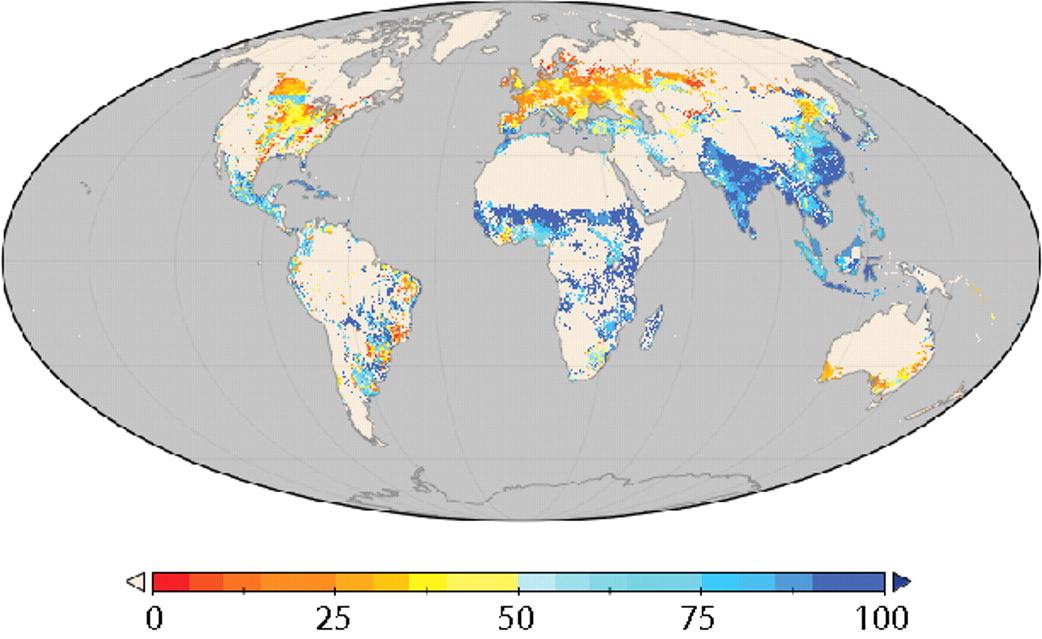Keepers of Genes, a 28-minute documentary produced by award-winning filmmaker Moving Images, documents the role played by pastoralists in preserving animal biodiversity and the key issues confronting them today.
Anyone seen it? Anyone know more?
Agricultural Biodiversity Weblog
Agrobiodiversity is crops, livestock, foodways, microbes, pollinators, wild relatives …
Keepers of Genes, a 28-minute documentary produced by award-winning filmmaker Moving Images, documents the role played by pastoralists in preserving animal biodiversity and the key issues confronting them today.
Anyone seen it? Anyone know more?
Dr Lois Englberger of the NGO Island Food Community of Pohnpei, Federated States of Micronesia has just announced the release of a colorful new local food poster entitled “Pohnpei Pandanus: Carotenoid-rich Varieties.”Â

Photographs and nutrient content of nine varieties of pandanus from Mwoakilloa Atoll and two varieties from Kapingamarangi Atoll are presented, along with the message that these carotenoid-rich foods can help protect against cancer, heart disease, diabetes, vitamin A deficiency and anemia or weak blood.Â
The development of the poster started in 2003 with the collection of samples and arranging for analysis for provitamin A and other carotenoids, including beta-carotene, the most important of the provitamin A carotenoids. Note that rice contains no carotenoids.
We hope that this poster may help to promote this neglected food crop, to raise awareness about the distinct varieties of pandanus and to increase understanding about the important health benefits that may be obtained by consuming this fruit.
Warm thanks are extended to the Pohnpei Cancer Coalition, Global Environmental Facility Small Grant Program, Sight and Life, Center for Indigenous Peoples’ Nutrition and Environment, Australian Embassy, SPC GTZ Pacific German Regional Forestry Program, Pohnpei Agriculture, Pohnpei Departments of Health and Education, and the College of Micronesia-FSM for funding and other support, to the Secretariat of the Pacific Community in Suva, Fiji, for assistance in getting the poster developed, printed and laminated, and to all those assisting in this project.
 Our cartography nut is otherwise engaged, temporarily, but I know he’d love this one. Blue shows agricultural production consumed directly by people: food. Orange-red is consumed indirectly in processed products, mostly feed for livestock but also things like cotton and coffee. Notice anything interesting about the distribution? Yeah, me too.
Our cartography nut is otherwise engaged, temporarily, but I know he’d love this one. Blue shows agricultural production consumed directly by people: food. Orange-red is consumed indirectly in processed products, mostly feed for livestock but also things like cotton and coffee. Notice anything interesting about the distribution? Yeah, me too.
Hat tip to Resilience Science, which gives links to the original study.
XML SOAP names are available from the Biodiversity Heritage Library: no geeks available for comment (but I suspect this could be important).
Tangled Bank 94 is up at Life before Death, full of biological diversity and goodness. Best part about it? The host is a bee-keeper! (I think I may have apiarist-envy.) She hasn’t actually posted on bees since 28 September, but it is winter so there can’t be all that much to write. I would love to have an expert’s view on the latest news on Colony Collapse Disorder in the US, which is that it is not the result of bees imported from Australia carrying a virus imported from Israel.